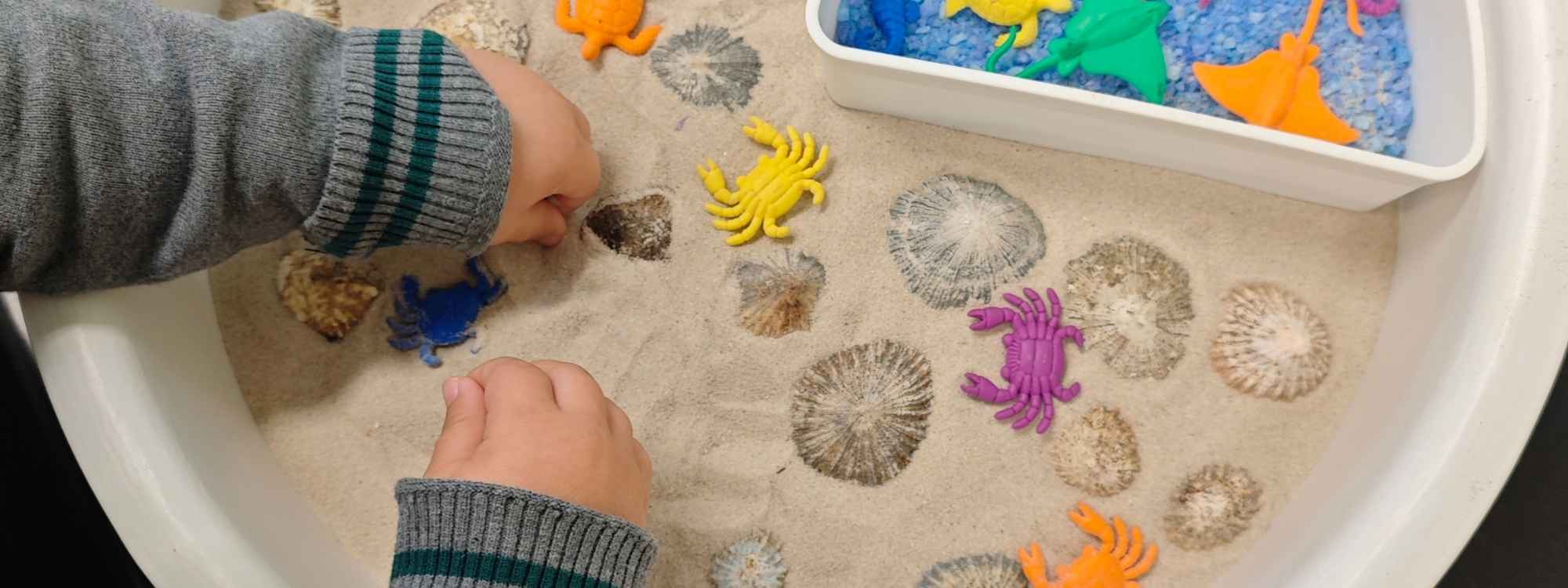Signs Your Baby Is Not Autistic: 7 Key Milestones
As parents, it is natural to worry about your child’s development, especially with the increasing awareness of Autism Spectrum Disorder (ASD). While early signs of autism can be detected in infancy, it’s equally important to recognize signs of typical development. Every baby develops at their own pace, but there are key social, communication, and behavioral milestones that indicate healthy growth. Let’s dive into the topic: Signs Your Baby Is Not Autistic.
This article will outline seven clear signs your baby is not autistic, backed by developmental research and expert insights. It will also provide guidance on when to seek professional advice.
Understanding Typical Baby Development
Babies grow and develop rapidly in their first year, reaching important milestones that indicate healthy cognitive, social, and motor development. Here’s a brief overview of the main areas of development:
Social and Emotional Development
Babies begin making eye contact within the first few weeks of life, using it to bond with caregivers and engage in early interactions. By 6-8 weeks, they respond to social smiling, and by 3-4 months, they start recognizing familiar faces and reacting to emotions expressed by their caregivers. As they grow, they develop attachment bonds, showing a preference for familiar people and displaying joy when engaging with loved ones.
Language and Communication
From birth, babies communicate through crying, which gradually evolves into cooing and babbling by 2-4 months. By 6 months, they produce consonant-vowel sounds like “ba-ba” or “da-da” and respond to changes in tone of voice. Around 9-12 months, many babies start understanding basic words, pointing to objects, and using gestures such as waving or clapping.
Cognitive Development
Babies begin exploring their surroundings by reaching for objects, tracking moving items with their eyes, and responding to stimuli. By 6 months, they show curiosity, recognize familiar faces, and engage in problem-solving behaviors, such as figuring out how to grasp toys. By 9-12 months, they imitate actions and demonstrate object permanence, understanding that hidden objects still exist.
Motor Skills
Physical development follows a predictable sequence. By 3 months, babies can lift their heads during tummy time. By 6 months, they grasp objects and begin sitting with support. Around 9 months, they start crawling, and by their first birthday, many babies take their first independent steps.
It’s important to remember that developmental timelines vary. For children who may need extra support in reaching their milestones, in-home ABA therapy can provide personalized intervention in the comfort of your home.
7 Clear Signs Your Baby Is Not Autistic
1. Strong Eye Contact and Social Engagement
From an early age, babies typically seek out eye contact with their parents and caregivers. By 6-8 weeks, infants begin making eye contact and using it as a way to connect. They may gaze into their parents’ eyes during feedings and respond to facial expressions.
- Developmental Milestone: Babies should sustain eye contact and recognize familiar faces by 2-3 months. By this stage, they should also start tracking objects with their eyes and turning towards familiar voices. Consistent eye engagement during play and social interactions is a positive indicator of cognitive and social development.
- Autism Comparison: Babies with autism may avoid eye contact or have difficulty sustaining it. A lack of response to social cues could be a sign to monitor. They may also appear indifferent to caregivers’ attempts to engage them, showing minimal or inconsistent facial expressions.
2. Smiling and Responding to Others’ Emotions
A baby’s first social smile usually appears by 6-12 weeks. Smiling is an important milestone as it signals social engagement and emotional recognition. Babies also start to respond to caregivers’ emotions, mirroring their happiness or distress.
- Developmental Milestone: Smiling at people by 2 months and laughing by 4 months. Babies at this stage should also start responding with facial expressions when spoken to, showing an awareness of their surroundings. By 6 months, they often engage in social exchanges, reacting with excitement when seeing familiar people or experiencing playful interactions.
- Autism Comparison: A baby who does not smile in response to social interaction or shows little emotional engagement may need further evaluation. Additionally, they might not exhibit anticipatory excitement or joy when seeing familiar faces, which is a common trait in typically developing babies.
3. Babbling, Cooing, and Early Vocalizations
Babies begin experimenting with sounds early on. By 2 months, they start cooing, and by 4-6 months, they engage in babbling, producing repetitive consonant-vowel sounds like “ba-ba” or “da-da.”
- Developmental Milestone: Babbling should be present by 6 months and progress into more complex sounds by 9 months. By this time, babies may start experimenting with different pitches and tones, attempting to mimic the speech patterns they hear around them. They may also begin responding vocally when engaged in conversations with caregivers.
- Autism Comparison: A baby with autism might not babble, or they may develop language skills more slowly and struggle with back-and-forth communication. They may also produce repetitive or monotone sounds instead of varied vocal expressions.
4. Responding to Name and Sounds
By 6-9 months, babies recognize and respond to their names, turning their heads when called. They also show reactions to sudden sounds and voices, indicating awareness of their surroundings.
- Developmental Milestone: Babies should turn toward familiar voices and sounds by 6 months and consistently respond to their names by 9 months. Additionally, they may react to music, clapping, or sudden noises, indicating auditory awareness. A growing ability to recognize and react to changes in tone, volume, and language is a crucial part of their communication development.
- Autism Comparison: One of the early signs of autism is a lack of response to one’s name, even when called multiple times. Babies on the spectrum might also display an unusual sensitivity to auditory stimuli, either appearing indifferent to loud noises or overreacting to common sounds.
5. Imitation and Interactive Play
Babies naturally imitate facial expressions, sounds, and gestures as part of their learning process. ABA therapy and play therapy can work together to support these foundational skills through interactive and engaging play
- Developmental Milestone: Imitating simple actions like waving or clapping by 9 months. By this stage, babies also begin to mirror facial expressions and simple sounds, engaging in back-and-forth social play. This imitation helps build foundational communication and social interaction skills, which continue to develop as they grow.
- Autism Comparison: Babies with autism might show little to no interest in imitating or engaging in interactive gestures. They may prefer repetitive self-directed actions rather than socially interactive play, such as repeatedly spinning objects rather than copying clapping, or waving.
6. Engaging in Peek-a-Boo and Early Social Games
Peek-a-boo is more than just a fun game; it helps babies develop object permanence and social interaction. By 6-9 months, babies actively participate and show excitement during such games.
- Developmental Milestone: Engaging in social games for 9 months. Babies should show excitement when playing peek-a-boo, laughing, and anticipating the next move. They may also attempt to initiate play by covering their faces or responding with playful gestures, demonstrating an early understanding of social interaction and shared experiences.
- Autism Comparison: Babies who do not engage or react to playful interactions may need further assessment. They might not display an understanding of turn-taking games or fail to show anticipatory excitement when a familiar game, like peek-a-boo, is initiated.
7. Age-Appropriate Motor Development
Physical development is another key aspect of healthy growth. Babies typically sit unassisted by 6-7 months, crawl by 9 months, and take their first steps around 12 months.
- Developmental Milestone: Sitting by 6 months, crawling by 9 months, walking by 12-15 months. During this time, babies also refine their fine motor skills by grasping objects, transferring them between hands, and starting to explore self-feeding. Their ability to coordinate larger movements like standing and pulling up signifies continued progress in motor development.
- Autism Comparison: Delays in motor skills alone are not always indicative of autism, but repetitive movements like flapping or toe-walking can be early indicators. Additionally, they may show an unusual fixation on certain physical sensations, such as repeatedly rocking back and forth or being averse to certain textures.
Conclusion: Signs Your Baby Is Not Autistic
Understanding your baby’s developmental milestones can provide peace of mind and help identify potential concerns early. While autism presents unique challenges, many developmental variations are completely normal. If your child is making eye contact, engaging with their environment, and meeting age-appropriate milestones, they are likely developing typically. However, if you have concerns, early intervention and professional guidance can make a significant difference. Stay observant, trust your instincts, and seek support if needed to ensure your child thrives.
At Champions ABA, we offer compassionate, individualized ABA therapy to help children build essential skills. If you have concerns about your child’s development, call us at (877) 242-1744 or visit our website to learn how we can support your child’s journey.
FAQs: Signs Your Baby Is Not Autistic
How can I reduce the chances of autism?
Autism is primarily genetic, so there’s no guaranteed way to prevent it. However, maintaining a healthy pregnancy, avoiding harmful substances, and ensuring early social engagement can support overall brain development. Providing a nurturing environment with responsive interactions may also help strengthen communication and cognitive skills.
How do I know if my baby is not autistic?
A baby who makes eye contact, responds to their name, babbles, and engages in social interactions is likely developing typically. They should also show interest in people, smile responsively, and enjoy interactive play. Meeting these milestones suggests healthy social and communication development.
When should I worry about autism?
If your baby consistently avoids eye contact, doesn’t respond to their name by 9-12 months, or has delayed babbling and social engagement, it may be a sign to seek professional advice. Repetitive behaviors, such as hand flapping or fixation on objects, can also be early indicators. If you have concerns, early evaluation can provide clarity and support.
When do autism signs start?
Early signs of autism can appear around 6 months but are typically more noticeable between 12-24 months. Signs may include a lack of social responsiveness, limited communication, or repetitive movements. If you notice these behaviors, a professional assessment can help determine the next steps.



